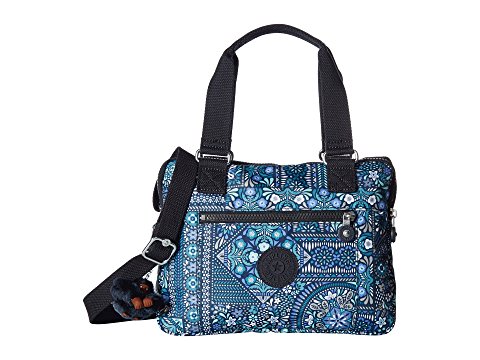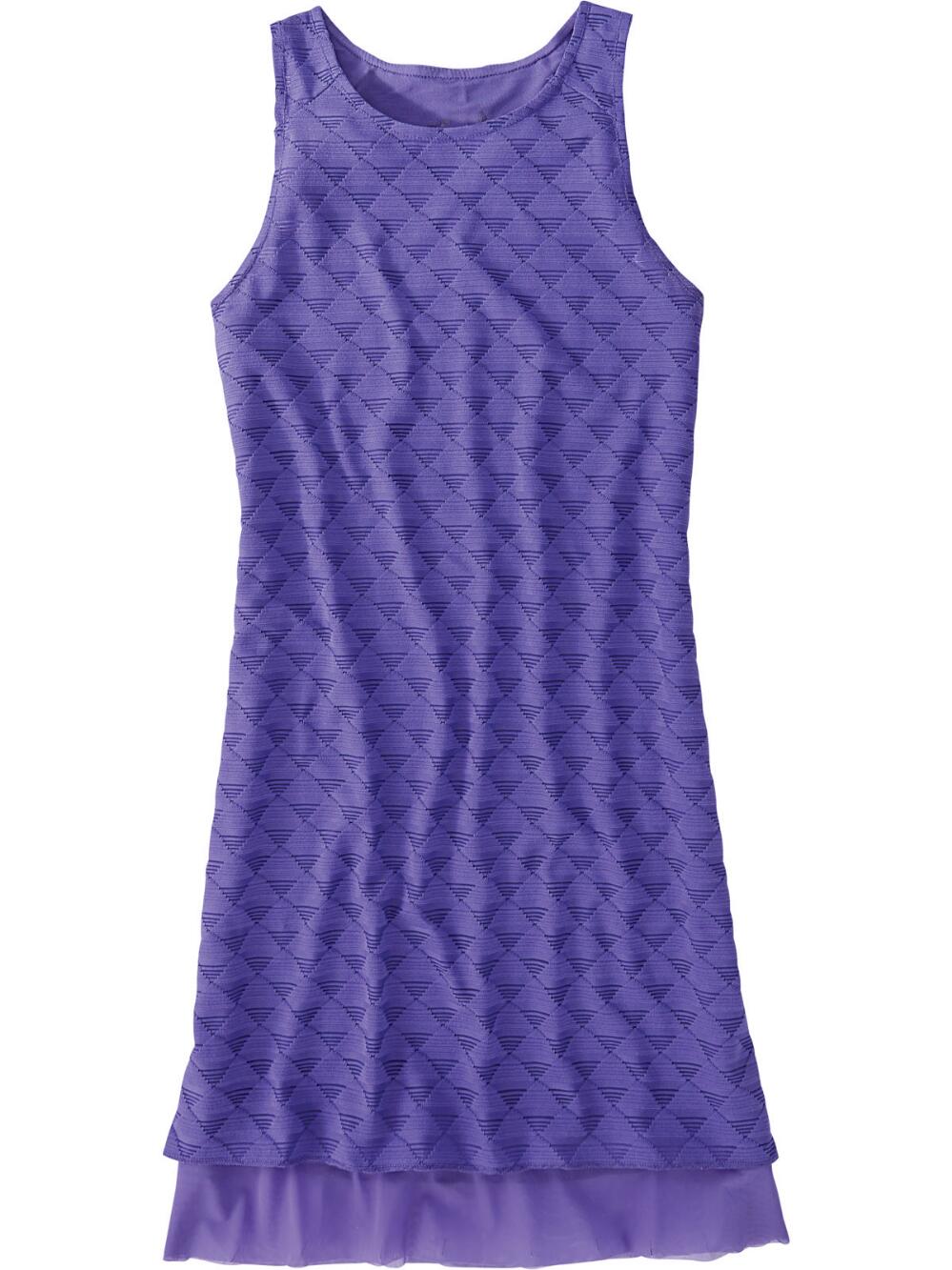Industry
E-Commerce Copywriter
How to Write Amazing E-Commerce Product Descriptions That Will Have Your Items Flying Off the Shelf
Need help writing persuasive product descriptions for your e-commerce site?
Get a no-obligation quote here.

To succeed in e-commerce, you need quality product descriptions that resonate with buyers.
Need help writing product descriptions? Get a free quote here.
If you have an e-commerce site selling goods over the internet, your product descriptions are critical to your success. They’re often the deciding factor in whether a customer buys or flies, leaving your site without making a purchase. In a nutshell, here’s what goes into creating persuasive product copy.
How to Write a Product Description
- Define your prospective customer.
- Explain how your product solves a problem.
- Describe how it can improve your prospect’s life.
- Use simple sentences and a conversational tone.
- Answer the questions in the customer’s mind.
- Limit the hype. You’re not selling a used car.
- Compose enticing headlines and subheads.
- Use bullet points to break up chunks of copy.
- Give product features but focus on benefits.
- Combine facts with emotional content.
Product descriptions are worth investing the time to write well. Alternatively, you can hire a professional e-commerce copywriter who can do the job for you.
Now let’s take a more detailed look at what goes into a well-written product description.
Begin by Answering These Questions
“Product description optimization is one of the highest-return, lowest-investment tactics available to an e-commerce manager,” says David Hoos of The Good. The secret is to “focus on what the customer will do with the product.”

An effective product description answers the questions in the customer’s mind.
To write a functional product description for your e-commerce site or on Amazon, start by answering these 4 questions:
- Who is this product for?
- What are the product’s distinguishing features?
- How should this product be used?
- How will this product improve the buyer’s life?
According to Big Commerce, “Whether your products have a specific function, like a camera, or a personal purpose, like fashion, all products exist to enhance or improve the purchaser’s quality of life in one way or another. As the shopper browses, they instinctively imagine having each product in hand, using it and enjoying it. The more powerful the customer’s fantasy of owning the product, the more likely they are to buy it.”

In your descriptions, tell customers how your products will improve their life.
The Truth About Manufacturers’ Product Descriptions
If you’re a seller or distributor for brand-name products, the manufacturers you work with probably provide you with pre-written product descriptions. That certainly makes things easy – copy, paste, done. But is it effective? Unfortunately, no.
The problem is that unless you’re the exclusive seller of those products, plenty of other businesses are using the supplier-provided product descriptions—same words, same format, same style.

Don’t use manufacturer-provided descriptions. The competition is already using them. You’re better than that!
If you’re trying to differentiate yourself from the competition – and you should be – manufacturers’ descriptions aren’t going to cut it.
They’re also not going to help you rank well on search engines like Google and e-commerce sites like Amazon, both of which reward original, value-added copy, not cloned content.
So, once again, it’s up to you to come up with your own well-written, original product descriptions or work with a copywriter who can.
Need help writing creative product descriptions? Get affordable copy here.
Convey Enthusiasm in Your Product Descriptions
Not only must your product descriptions be original. They must also be effective, correct? You’re not in this for bragging rights; you want to make sales!
Conversions are the name of the game for e-commerce sites. If goal #1 is: drive traffic to your site, then goal #2 must be: convert those visitors into customers.
Unfortunately, if you’re posting sub-par product descriptions, you’re not going to achieve either goal.

Conversions — turning visitors into customers — are the name of the game for e-commerce sites.
Think of your product descriptions as your in-store salespeople. If they’re not enthusiastic and persuasive, they won’t draw customers to your goods. If they don’t successfully convey why the buyer needs this product TODAY, they are useless.
According to Express Writers, “Copy that doesn’t excite won’t inspire conversions. Being too dull or boring will sink your ship quickly. The best product descriptions include some degree of enthusiasm and urgency that make people want to buy your products right now.”
Define Your Buyer
Anyone who performs in public will tell you that it’s critical to know your audience before creating your material. Think of a comedian. A joke successfully delivered at a high school assembly probably isn’t going to fly at a gathering of senior citizens.
The same premise applies to writing product descriptions: know who you’re targeting. “The best copywriters in the world are able to write product copy that converts because they understand their target audience,” according to Shopify Nation. “By doing so, their copy is able to empathize with the target prospects and address all the purchase objections.”

Before writing your descriptions, develop a profile of your target customer.
“You need to understand the psychology and intent of your users and deliver the experience they’re looking for,” according to Moosend, an e-commerce marketing company that has evaluated the best Shopify stores for 2019.
Answer these questions to develop an accurate profile of your e-commerce buyer:
- Who are my prospective customers? Old/young, male/female, school/work, rich/poor, likes/dislikes, etc.
- Why would they want to buy my product? What problem does it solve? How does it make them feel?
- Why should they choose my product instead of my competitor’s?
- What words or phrases do they use to search for a product like mine?
- What objections might they have that could keep them from buying my product?
Once you’ve developed your buyer persona, make sure your product description hits on the selling points that will resonate with them.
Product Descriptions Help Your SEO
Ideally, you’d love for Google to deliver your e-commerce site in search results whenever someone searches for a product you sell. Who doesn’t love free advertising?
But everyone wants their site on page 1, preferably near the top. So you’ll need to be smart to win that race. When you write your product descriptions, keep search engine optimization (SEO) principles in mind.
Steer clear of generic terms and instead use long-tail keywords that are specific to your product. For example, if you sell Black Forest antiques, be sure to incorporate and expand on the phrase “Black Forest antiques” versus talking only about “antiques.” The word “antiques” by itself is too competitive for you to gain ranking.

Keep SEO best practices in mind when writing your product descriptions.
According to Oberlo, an e-commerce wholesaler, “Having optimized product descriptions can help improve your search engine optimization (SEO). By optimizing your product descriptions to include specific keywords, you can help improve your chances of ranking high on Google.
Without product descriptions, you may be able to optimize your images for keywords, but your product page may not appear high in search engines due to a lack of content.”
Need help with SEO for your product descriptions? Get a free quote here.
Include the Details
How many times have you planned to buy something online but the product description was inadequate? You couldn’t tell if the product was what you wanted because the seller hadn’t provided enough information or the right information. Frustrating, right?
You’d be better off to strive for creative copy and innovative approaches to help the customer get the “fit and feel” of a product.
Details matter when it comes to product descriptions. They’re the key to converting visitors into customers. General terms like “good” and “quality” don’t mean much when they aren’t supported by specifics.
Size, color, weight, material, specs and uses are important to customers, so tell them what they want to know or risk losing sales. Look at all the details Zappos includes in its product description of this simple purse:

This purse featured on Zappos.com is described in great detail so buyers can make an informed decision.
Item Information
- The lightweight and functional Kipling® Brent bag is perfect for everyday.
- Crossbody bag made of coated crinkle nylon.
- Dual zip closures.
- Adjustable crossbody strap.
- Front exterior zip pocket.
- Interior features two slip pockets, a zip pocket, and pen holder, and a key clasp.
- Comes with signature Kipling monkey key chain.
- This product may have a manufacturer’s warranty. Please visit the manufacturer’s website or contact us at warranty@support.zappos.com for full manufacturer warranty details.
- Measurements:
- Bottom Width: 10 in
- Depth: 4 1⁄2 in
- Height: 8 in
- Strap Length: 17 in
- Strap Drop: 7 in
- Accessory Strap Length: 58 in
- Accessory Strap Drop: 28 in
- Weight: 14 oz
That description is then followed by customer feedback and complemented by various photos of the purse, inside and out. Your customer wants — and expects — those details.
Here’s another example. My son ran an e-commerce business out of our house during his summers home from college. He sold gently used Lego model kits through auctions on eBay. You can read more about Ryan’s Lego business here.

My son’s e-commerce Lego business was largely successful because of Ryan’s lengthy product descriptions.
What he quickly learned was that he had plenty of competitors, people selling the exact same sets he was. But he found he could beat them by writing long, comprehensive product descriptions.
As a kid who’d grown up playing with Legos, he knew what features would appeal to his young buyers and he could speak about them in great detail and with genuine enthusiasm. Trap doors, hidden rooms, cool weaponry, anything with wheels – Ryan’s buyers couldn’t get enough. Often his Lego kits sold for two and three times as much as competitors’ even though they were the exact same kit. The sole difference? The product description.
Assistance writing product descriptions is surprisingly affordable. Get a free quote here.
How Long Is Too Long?
Your product descriptions should be as long as is necessary to describe the features and selling points. Don’t ramble, repeat facts or include irrelevant information. But do include all the important details such as those in this product descriptions list:
- Color
- The weight
- The size
- Image or video
- Specifications
- Exploitation
- Product Benefits
- The materials from which it is made
- Reviews
- How it is made (for example, made by hand)
- Sustainability Details
- Pricing details
Research shows that buyers tend to prefer long product descriptions. They want to know as much as possible about a product before making a purchase. Think of those lengthy infomercials on TV. The more you tell, the more you raise the perceived value of a product while lowering the prospect’s resistance to buy.
Someone who is genuinely interested in the product will likely read every word and appreciate being able to buy with confidence because they know exactly what they’re getting and how it will benefit them.

The more details you provide, the better your chances of making a sale.
Choose Your Copywriting Style
The tone of your copy should match your company’s image. Try imagining the tone a high-performing salesperson would use in speaking with prospects. Would they be light and humorous or refined and serious?
So, for example, if you’re selling expensive jewelry and targeting only the extremely wealthy, write your copy so that it sounds elegant and suitably formal. Similarly, if you’re selling precious metals as investments, speak the language of financially-savvy buyers.
If you’re selling cooking products to foodies, don’t hesitate to use terminology that will help you connect with gourmets and food enthusiasts.
Selling technology products? Geek out in your word choices.
Writing for teens? Use words like epic, rad, on fleek and so dope. (Yeah, that last one makes me cringe a little too.)
Just be careful about using jargon. If there’s a chance your reader won’t know the terminology, choose simpler terms. Avoid clichés, which are unlikely to be effective in painting a picture of your product in your prospect’s mind.

Is your writing style light and friendly or formal and proper? Adopt the tone that is most likely to resonate with your target customers.
Finally, consider using humor. Who doesn’t like a clever comment or amusing thought? Check out the cheeky description of this dress on TitleNine.com.
“An athletic heart with serious street style. The Runagade stands up fabulously to being thrown in a duffel, hand-washed in the sink and worn for four days in a row…don’t ask.”

Show some personality by using humor in your product descriptions if it fits with the tone of your brand.
Look upon your product descriptions are an opportunity to inject some personality. According to SkuVault.com, an e-commerce company, “Your tone should be unique to your brand. It will ultimately define who you are and solidify your spot in the market. Your tone is also what differentiates you from your competitors.”
Get affordable copy for product descriptions. Request a free quote here.
List Features but Highlight Benefits
Features are the specifics about your products; size, shape, composition, etc. They’re what your product has or is.
Benefits are how those products will make the user’s life better. They’re how those products solve problems and produce outcomes. Essentially, they’re why the buyer makes a purchase.
It’s up to the copywriter to connect the dots between features and benefits. Consider these examples:
Let’s say you’re selling a grocery delivery service.
Feature: We deliver anywhere in the Chicago area.
Benefit: You don’t have to spend time stopping by the store or waiting in line to pay. The groceries are delivered right to your door.
Imagine that you’re selling a toy model for kids.
Feature: 187 individual parts to assemble.
Benefit: Will keep your child occupied for hours and hours.
Customers look for the features but ultimately, it’s the benefits that make them buy.

Your product descriptions should include features and benefits, both of which are important to getting the sale.
According to Printwand, a marketing agency, “Since features work on a factual level rather than an emotional one, they’re often confusing or hard for a customer to understand. For example, the technical specs on a laptop might not make sense to a customer unless they’re familiar with computers. However, the benefit of having a fast laptop that can store a lot of photos, videos and music is something that any computer owner can relate to.”
To help you uncover the benefits related to your product, think about what users can achieve or obtain with them. Answer these questions:
Does your product:
- Solve a problem that your customers have?
- Help them achieve a goal?
- Make them feel good, either physically or emotionally?
- Take away pain and discomfort?
- Enhance their social status?
- Increase their chances with the opposite sex?
If you answered yes, to any of these questions, you now know the benefits to tout in your product description. They’re the reasons your customer will buy.

Think of your product descriptions as opportunities to tell the prospect all the reasons she should buy.
Find Clues in Customer Feedback
Here’s another great tip for determining what to write in your product description. Check out the customer feedback on similar products or competitor products.
What are customers talking about? What do customers like? What’s important to them? What do they point out about this product that’s better than other comparable products?
Their comments are helpful hints to what’s important to customers and the reasons they make a purchase. Use those clues to craft your product descriptions.

A good story about your product or brand can transform the mundane into something meaningful and desirable.
Tell a Story
Everyone loves a good story. It touches your emotions, brings products to life and makes them memorable. The back story of how your product came to be and how it’s used can supply you with some compelling copy that endears you to your customer.
I remember traveling in Istanbul, Turkey. Vendors approach you at the tourist sights and try to sell you their handmade rugs. To me, at first, the rugs looked like, well, rugs. Why would I buy one in Turkey when I could go to Target at home and pick one up on the cheap?
But then one of the vendors began to tell me about the rugs his shop made. He showed me the different designs and explained what the different woven symbols meant. He told me about Turkey’s colorful history as rug makers going all the way back to the twelfth century.

Rugs aren’t just rugs when the customer is made aware of the rich history and heritage they represent.
He then walked me over to his shop, about 10-minutes away. He explained that the shop had previously been his father’s and his grandfather’s before that, an impressive legacy that had me admiring his family’s heritage and culture.
Then he brought me into the back room where Turkish women were sitting cross-legged on the floor, weaving the rugs by hand. By the time he was done, I was ready to buy. The story behind his rugs brought them to life for me, and in doing so, they suddenly had great value. (It’s been 30+ years, and I still have–and love–that rug!)
The power of stories lies in their ability to increase the value of a product and sell it. They transform the mundane into something meaningful and desirable.
Need help writing your product’s story? Get a free quote here.
Make Product Descriptions Scannable
Nobody needs to tell you how busy folks are these days. Surely, you know firsthand. So while you want to make your product descriptions comprehensive, they shouldn’t be one or two giant blocks of text that look daunting to readers.

Use headlines, subheads and bullets in your product descriptions to break up lengthy text.
Break up your text with bullet points that the reader can quickly scan. Consider also using headlines and subheads to highlight benefits and divide the copy into easy-to-digest bites.
Add Customer Product Reviews
Encourage your buyers to give you feedback. Consider incorporating product reviews and testimonials on your sales page alongside your product descriptions.

Product reviews and mentions on social media can do wonders for promoting your brand.
Here’s what product reviews can do for you:
- Give the buyer a more detailed, well-rounded understanding of the product
- Touch on points that perhaps you missed or don’t quite belong in the product description
- Build trust because the comments are coming from an objective third party
- Create a sense of FOMO (Fear Of Missing Out) in the buyer
- Get people talking about your products on social media
Additionally, product reviews increase your product description’s footprint, and that’s something that Google likes and rewards.
“As consumers, we rely heavily on the opinion of others,” according to SEO for Growth, in its article about how to increase conversions on e-commerce sites. “When it comes to products, we tend to gravitate towards an item with positive feedback because naturally, everyone wants the good stuff. Social proof is a very manageable and powerful tool that helps draw audiences in the best way.”
Fast turnarounds on copy for product descriptions. Get a free quote here.
Incorporate Photos, Videos & More
I’m a copywriter, so I’m sure you expect me to be all about the words. And I am. But there’s no denying that including photos, videos and any other visuals and graphics should be a part of your product descriptions.
Because customers can’t actually touch and try on your products, you need to show them what they’re buying in colorful, realistic images. A well-crafted product description shows and tells.

Look how happy this girl is shopping on your e-commerce site! Make sure you don’t disappoint her with lame product descriptions. 🙂
Furthermore, your images should complement your written product descriptions. For example, if your description mentions that the handbag you’re selling has a longer-than-usual shoulder strap, don’t just give the dimensions. Show the purse on someone’s shoulder, so the customer can see where the purse lands on your model.

Differentiate your product from the competitions’ with scintillating, original copy.
Create a Positive Customer Experience
Your customers want the ability to shop when and how. It starts with high quality product descriptions, but that’s not where it ends. Offering to get goods to consumers fast and cost-efficiently are critical details.
The best e-commerce retailers of the future will offer seamless, omni-channel (online, mobile, in-person), hassle-free experiences that simplify the entire customer journey from opening an account and selecting a desired product, to making a purchase and choosing a delivery option.
A Few Conversion Optimization Hacks
Having a successful e-commerce site is often not so much about the big picture as it is the fine details. Often simple changes can greatly increase sales. Think about implementing some of these tips as you build your site.
- Increase your page speed
- Keep the home page simple
- Make the navigation intuitive
- Do user experience testing
- Use live chat
- Offer free shipping
- Turn off Captcha
- Limit the number of social share buttons
- Add your phone number to contact details
- Make your website responsive (to work on any device or screen)
- Make your site mobile-friendly
- Place a promo code on the home page
- A/B test your pricing pages
- Allow customers to check out as guests
- Offer alternative payment methods
- Add a button to PayPal
- Offer a free trial
- Use trust and security seals
- Minimize registration form fields
- Use high quality product images
- Highlight products on sale
- Use bigger, brighter buttons
- Add product ratings
- Add FAQs for products
- Streamline your checkout process
- Add coupons offering discounts
- Offer gift cards
Here’s What Doesn’t Work
We’ve spent a lot of time reviewing what you should do when writing product descriptions for your e-commerce site. But how about what you shouldn’t do? What are the pitfalls to avoid? Here are my top 10:
- Don’t be too wordy – give the facts, don’t ramble, no blah, blah, blah
- Don’t use corporate speak – yawn
- Don’t over-promise – enough with the hyperboles (Trump, I’m speaking to you!)
- Don’t use clickbait – misleading headlines and photos to attract eyes annoy customers
- Don’t sound like a used car salesman – nobody likes pushy
- Don’t leave out important details – answer all their questions
- Don’t be boring – inject some personality into your descriptions
- Don’t sound wishy-washy – make strong statements and support them with facts
- Don’t be dislikable – people buy from people (and businesses) they like
- Don’t copy others’ descriptions — even if they’re selling the same or similar products, differentiate your items with scintillating, original copy

Consider hiring a professional e-commerce copywriter. It might be the best investment you make in your business!
Consider Working with an E-Commerce Copywriter
Writing original, persuasive product descriptions takes time, thought, and a dash of consumer psychology, but they are worth the effort. If you lack the time or expertise, consider working with an e-commerce copywriter who can get the job done quickly and effectively. What you spend on copywriting fees is likely to be made up many times over in increased sales.
* * *
Need help writing persuasive product descriptions for your e-commerce site?
Get a no-obligation quote here.
